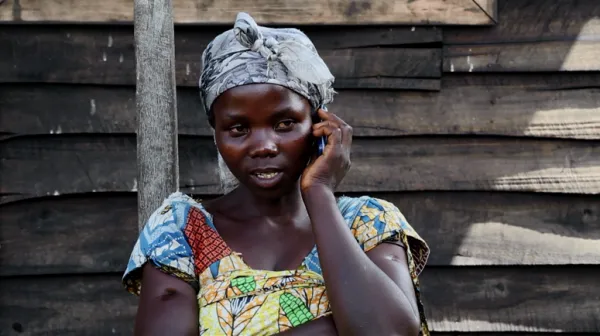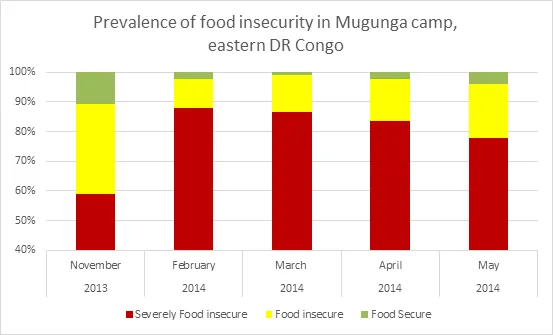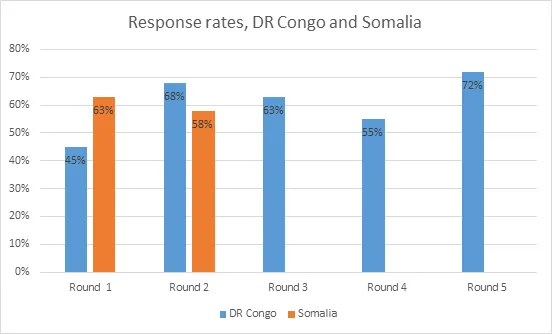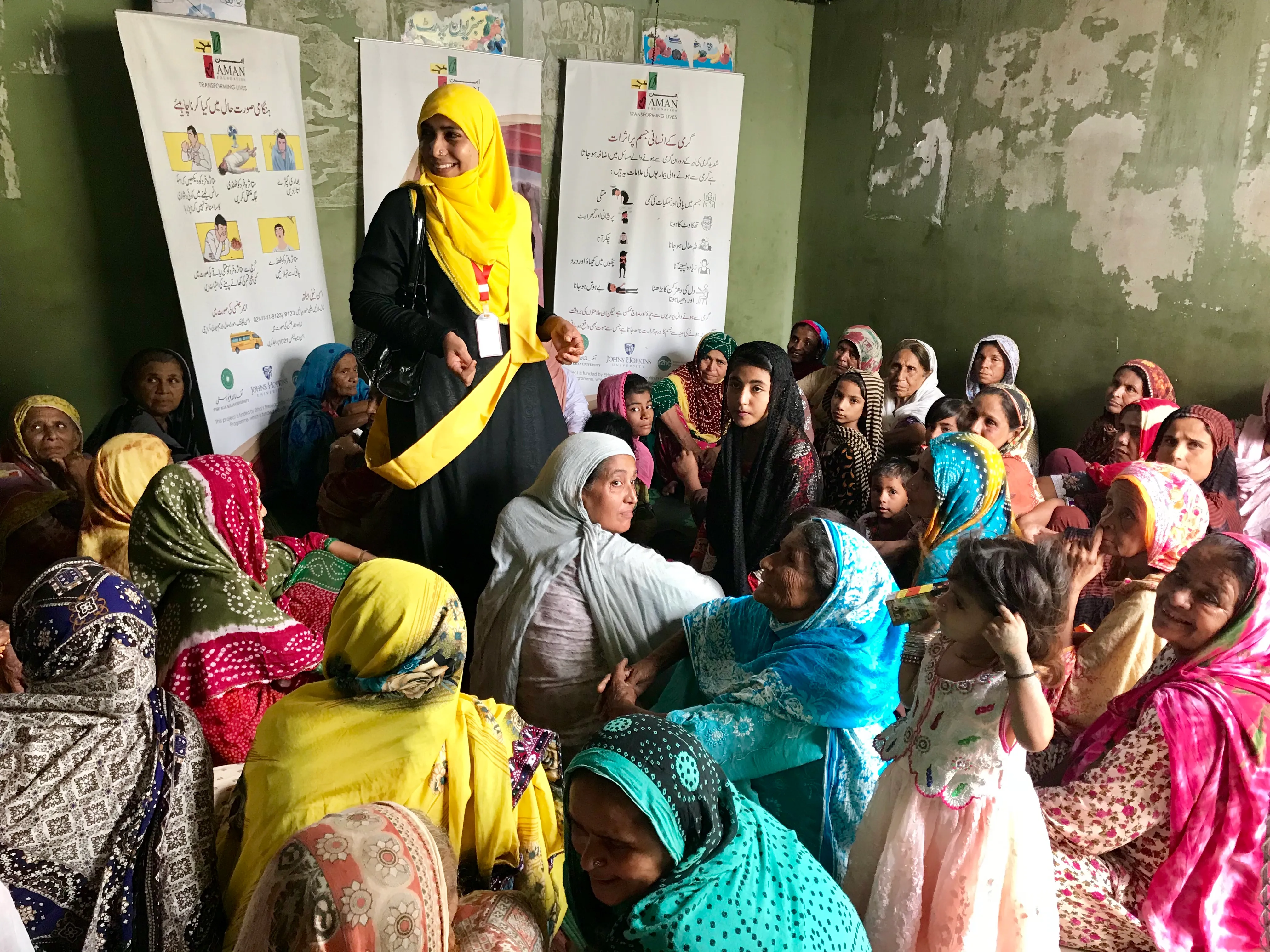WFP calling…what did you eat today?

This month, we take a look back at the data we’ve collected so far in Democratic Republic of Congo. We also explain what we’ve done to ensure that people answer our phone surveys. Finally, we provide an update about the start of our interactive voice response calls.
We’re also glad to share a short video clip about Agnes, a resident of Mugunga 3 camp near Goma in the eastern DRC. We have been calling Agnes and people like her every month. The clip gives a good idea of how mVAM is implemented in Mugunga 3.

Photo: WFP/David Orr.
What the data from DR Congo is telling us
The mVAM project attempts to offer quick, affordable food security data for decision-making. In that spirit, we recently put together a summary of our findings in DRC. Our summary bulletin shows that food security indicators in the camp have tended to vary according to the amount of food assistance that is provided. Indeed, these indicators deteriorated when food assistance stopped in early 2014, and improved as some assistance resumed from April. The data we’ve collected to date seems to match reality on the ground.

Source: mVAM phone surveys. Cross-tabulation of the food consumption score and reduced coping strategies index.
Maintaining response rates to phone surveys in DRC and Somalia
Our surveys involve calling the same people every month, in order to track their food security status through time. Ensuring that as many as possible respond to our calls every month is therefore a priority, and a challenge. The figure that follows shows how response rates have varied in DRC and Somalia.

Source: WFP. Round 1 took place in Feburary 2014 in DRC, in April 2014 in Somalia.
In order to obtain acceptable response rates in DRC, where mobile ownership is low, we had to provide people with phones and set up a phone charging station. While response rates in DRC stood at an acceptable 68% at round 2, they declined to 55% by round 4, primarily due to attrition. We felt there were things we could do to improve the odds of reaching people. Before round 5 in June, the team in Goma therefore distributed phones to 40 new respondents, began calling the non-WFP phones that existing respondents own, and increased the number of call attempts. We were pleased to see that after these efforts, the response rate jumped to 72% for round 5, which is the highest level to date. This tells us that in environments such as DRC, a high degree of awareness and flexibility is required to stay in touch with the people we want to hear from.
Our experience in DRC contrasts with Somalia, where cell phone ownership is much higher, and where initial response rates have been acceptable. In Somalia, we have not yet needed to resort to the more labour-intensive tactics we used in DRC. Overall, project response rates have fluctuated in the 55-70% range, which compare favourably to other phone surveys carried out in Africa and Latin America.
Testing the survey through interactive voice response
In our office in Goma, the Verboice IVR system is now operational, thanks to our colleague Carroll, backed up by Marie in WFP HQ and the people atInSTEDD. Having a telephony expert in the field office was essential to the successful installation and configuration of the IVR. In Goma, we are now testing automated phone calls in Swahili with a small sample of respondents.
We realize that the team in Goma has already accomplished a lot with our respondents, and we want to be deliberate in introducing automated calls. We certainly don’t want to compromise our achievements over the past few months as we introduce this new method. We also have a lot of questions: can the elderly respond to IVR calls? Will people key in the ‘right’ answers on their touchpad? Testing will tell us.
The VAM team in Somalia received and installed the IVR equipment – a dedicated laptop and special 4 SIM card modem-, and are now creating questionnaires in the local dialect using Verboice. We will then test how well the survey, conducted through IVR, works with ‘real’ people.
Funded by the Humanitarian Innovation Fund, The mVAM - ‘mobile Vulnerability Analysis and Mapping’ project provides for the use of voice technology for household food security data collection. It is expected that mVAM would lead to a leap in time and cost-efficiency of data collection.
Stay updated
Sign up for our newsletter to receive regular updates on resources, news, and insights like this. Don’t miss out on important information that can help you stay informed and engaged.
Related articles



Explore Elrha
Learn more about our mission, the organisations we support, and the resources we provide to drive research and innovation in humanitarian response.